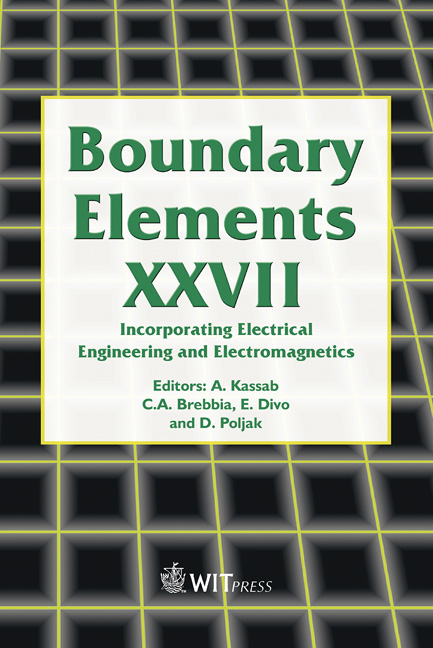BEM Modeling Of MEMS With Thin Plates And Shells Using A Total Lagrangian Approach
Price
Free (open access)
Transaction
Volume
39
Pages
9
Published
2005
Size
306 kb
Paper DOI
10.2495/BE050271
Copyright
WIT Press
Author(s)
S. Telukunta & S. Mukherjee
Abstract
Micro-Electro-Mechanical Systems (MEMS) typically consist of plate shaped conductors that can be very thin - with h/L≈ O(10−2−10−3) (in terms of the thickness h and length L of the side of a square pate). Conventional Boundary Element Method (BEM) analysis of the electric field in a region exterior to these thin conductors is difficult to carry out accurately and efficiently especially since MEMS analysis requires computation of charge densities (and then surface tractions) separately on the top and bottom surfaces of such thin plates. A new Boundary Integral Equation (BIE) is derived in this work, and coupled with Finite Element Analysis (FEM) to solve for the deformation of such thin MEMS structures. A fully Lagrangian BEM formulation is developed here. A relaxation scheme is implemented to solve for a self-consistent state of this coupled problem. Some sample results are presented in this paper. 1 Introduction The field of Micro-Electro-Mechanical Systems (MEMS) is a very broad one that includes fixed ormovingmicrostructures; encompassing micro-electro-mechanical, microfluidic, micro-opto-electro-mechanical and micro-thermo-mechanical devices and systems. MEMS usually consists of released microstructures that are suspended and anchored, or captured by a hub-cap structure and set into motion by mechanical, electrical, thermal, acoustical or photonic energy source(s). Typical MEMS structures consist of arrays of thin beams with cross-sections in the order of microns (µm) and lengths in the order of ten to hundreds of microns.
Keywords





